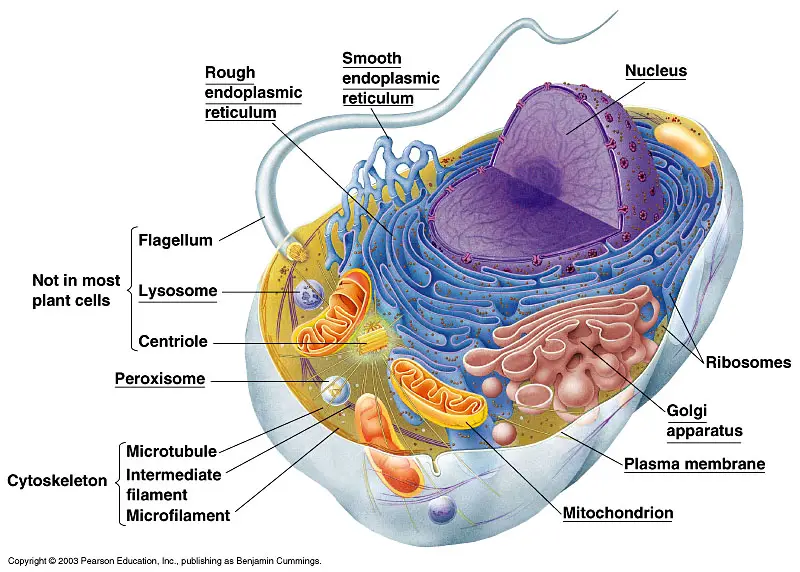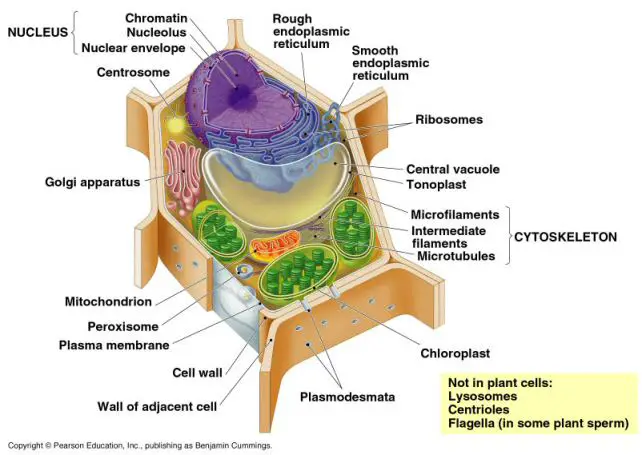|
A large eukarytoic cell - the yellow one - captures and kills prokaryotic cells - the little red bacteria. |
|||
|
California Standards:
Read Chapter 7, pages 152-166. (Hint: study the pictures) Do the Directed Reading Questions: 7.1 Questions, 7.2 Questions, 7.3 Questions
|
|||
| Resources | Microscopy | Structures of Cells | Structures of Cells |
|
Prokaryotic Cells unicellular organisms
Eukaryotic Cells multicellular organisms
unicellular and multicellular organisms
Viruses nonliving made of nucleic acids and proteins
Assignment 1. Read Chapter 7 pages 152-166 (Hint: study the pictures)
2. Do the Directed Reading Questions:
Structures and Functions Notes
|
1. Read the microscope magnification worksheet and complete the table in your notebook
2. Use a microscope to see:
3. Draw and label the cells at different magnifications in your notebook
4. Draw a scale bar and estimate the size of the cell in your notebook
|
Cell and Virus Models
Use the textbook and the Cells Alive interactive animation
Draw and label these structures:
prokaryotic cell structures (Chapter 20)
virus structures (Chapter 20)
|
Cell and Virus Models (cont.)
Draw and label these structures:
eukaryotic animal cell structures
eukaryotic plant cell structures 1-18 above 19. cell wall 20. chloroplast *12. central vacuole
|
|
Functions of Cell Structures - Animal Cell
1. plasma membrane (cell membrane): controls movement of substances and information into and out of the cell
2. cytoskeleton: keeps the shape of the cell and holds and moves the organelles
3. nucleus: organelle that protects the DNA
4. nucleolus: inside the nucleus, makes ribosomes
5. chromatin: DNA wrapped loosely around proteins in the nucleus
6. nuclear membrane: controls movement of substances into and out of the nucleus
7. cytoplasm: liquid that fills the cell, mostly water with many molecules, compounds, and ions dissolved in it where a lot of chemical reactions happen
8. rough endoplasmic reticulum (RER): folded membrane near the nucleus that has ribosomes attached to it, helps make proteins and send them out of the cell
9. smooth endoplasmic reticulum (SER): folded membrane that makes lipids
10. Golgi apparatus: organizes and packages proteins made by the RER into vesicles to transport out of the cell
11. vesicle: a small membrane ball used to hold and move substances
12. vacuole: a large membrane ball for storing substances
13. mitochondrion (mitochondria plural): produces ATP energy from food molecules
14. lysosome: a vesicle that contains enzymes that recycle old cell structures
15. peroxisome: a vesicle that contains enzymes that break down cell waste
16. centrosome: organizes microtubules for cell division and building cilia and flagella
17. centriole: microtubules inside the centrosome that make new microtubules
18. ribosome: makes proteins
|
Eukaryotic Animal Cell
|
||
|
Functions of Cell Structures - Plant Cell
1-18 same as above
*12. central vacuole: a large vacuole filled with water to press against the cell wall to support the cell
19. cell wall: a hard protective structure outside the plasma membrane
20. chloroplast: produces organic compounds (food) for the cell
|
Eukaryotic Plant Cell
|
||
|
Prokaryotic Cell (bacteria)
Structures and Functions
|
Virus (not alive, not a cell)
Structures and Functions
|
||
|
Assessments |
Notebook - Microscopy 1. Microscope magnification table (4 points) 2. Drawings of cells
4 points = complete, 3 points = mostly complete, 2 points = partly complete, 1 point = very little complete
Total possible = 20 points
|
Notebook - Cell and Virus Models
4 points = complete, 3 points = mostly complete, 2 points = partly complete, 1 point = very little complete
Total possible = 12 points |
Cell Structure and Function Quiz (Textbook 7.1, 7.2, 7.3)
|
|
|
|||
|
Chapter 8
Cell Membrane
|
|||
|
Read Chapter 8 pages 176 - 186 Do the Directed Reading Questions
Homeostasis: keeping stable conditions inside the cell or organism despite a constantly changing environment
Example: membranes control the movement of water and other substances into and out of cells and organelles. Membranes maintain stable concentrations of water and substances inside cells and organelles.
|
Cell Membrane Structure
Phospholipids The cell membrane is made of a double layer of phospholipids.
Proteins Membrane proteins are part of the cell membrane.
There are four kinds of membrane proteins
|
Cell Membrane Function
The cell membrane controls the movement of substances and information into and out of the cell.
1. Passive Transport Solution = solute + solvent The solute is mixed in the solvent to make a solution. The solute is any substaqnce dissolved in water.
The amount of solute can be the same inside and outside the cell = equilibrium.
When there is no equilibrium, there is a concentration gradient = more solute on one side than the other.
Diffusion = the movement of solute from high concentration to low concentration.
Facilitated diffusion = the movement from high to low concentration through a channel protein or carrier protein. Large and polar compounds cannot move through the phospholipids, so they go through pores made by channel proteins or they are carried across the membrane by carrier proteins.
Osmosis = the movement of water from high to low concentration of water.
Diffusion, facilitated diffusion, and osmosis are passive transport because no energy is used to move the substances.
|
Cell Membrane Function (continued)
2. Active Transport Active transport requires energy because substances are moving against the concentration gradient from low to high.
pumps: some carrier proteins use ATP energy to pump substances against the concentration gradient.
vesicles: large substances are moved in vesicles. Endocytosis is bringing large substances into the cell by making a vesicle from the cell membrane. Exocytosis is moving large substance out of a cell by joining a vesicle to the cell membrane.
3. Communication Information moves into and out of the cell through the cell membrane.
Signals are messages sent between cells. Signals can be chemical or electrical. Chemical signals can affect one or many cells. Electrical signals are specific to one cell or group of cells.
Receptor proteins receive signals and pass the message through the membrane. Receptor proteins have specific shapes, so they only receive one kind of signal. A cell membrane has 100s or 1000s of different receptors.
Response: when a receptor protein gets a signal, it can cause three things to happen to the cell:
|
|
Assessments |
Lab Report
|
Chapter 8 Quiz
|
Test Review
Chapters 7 & 8 Test
|





